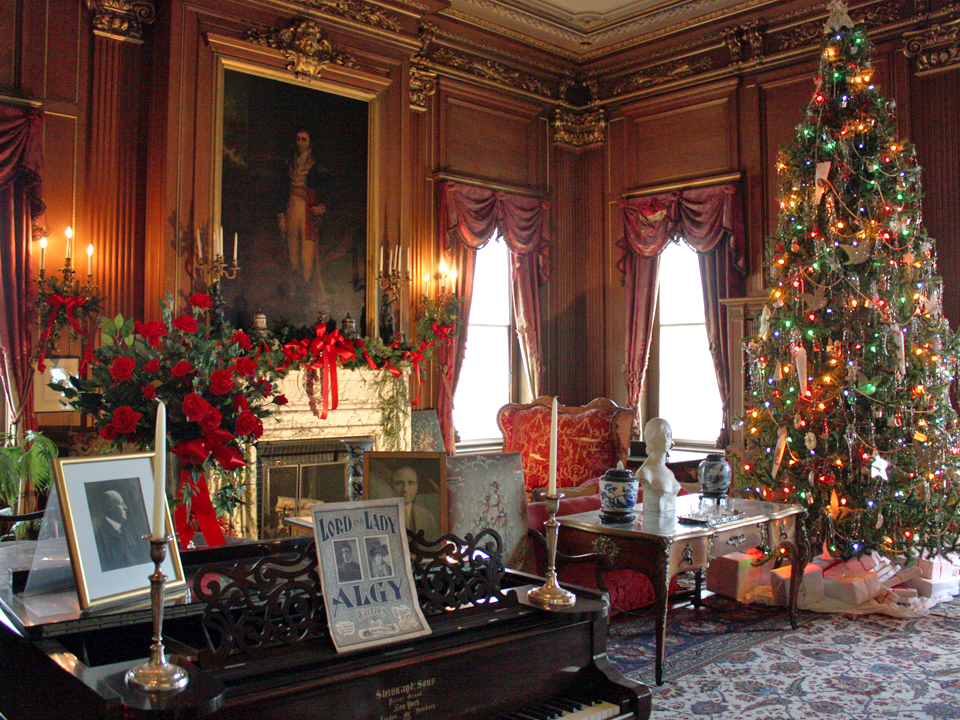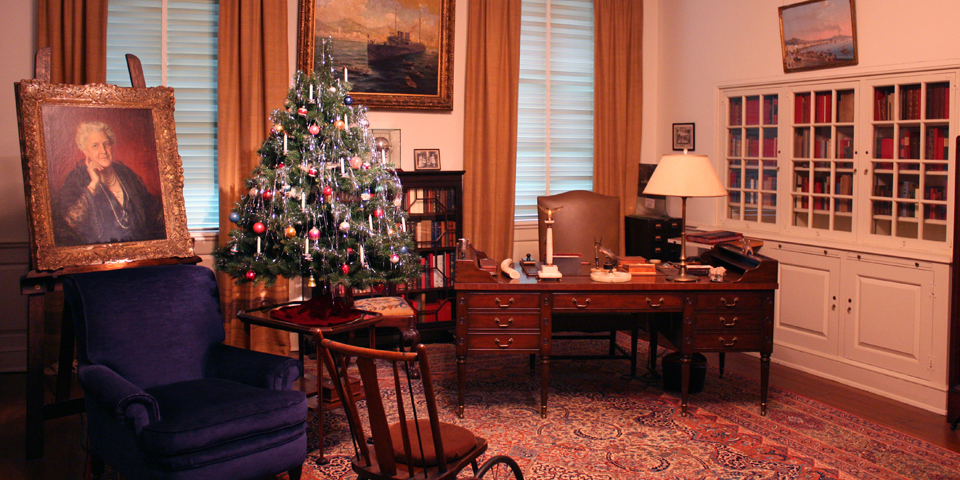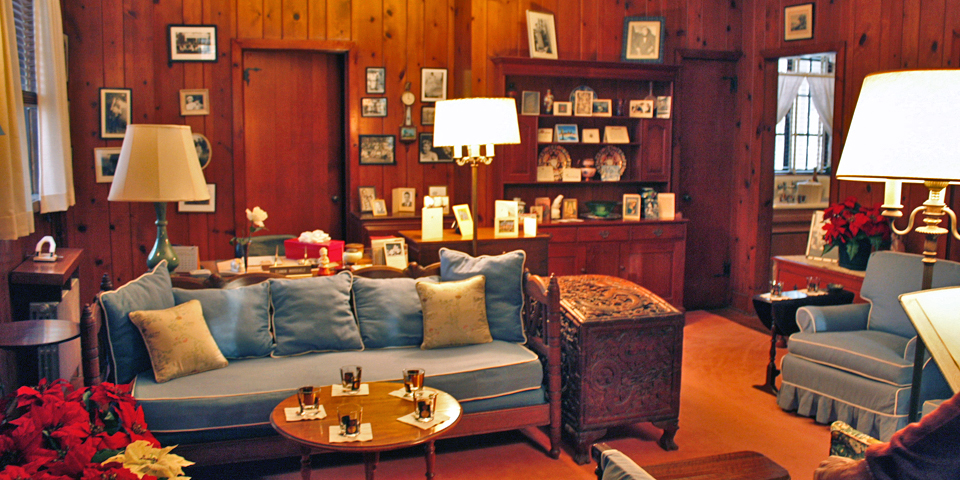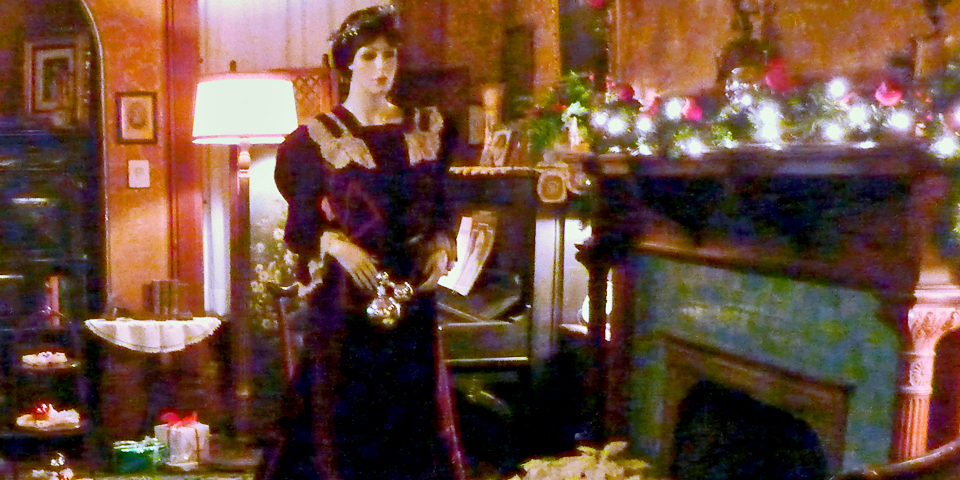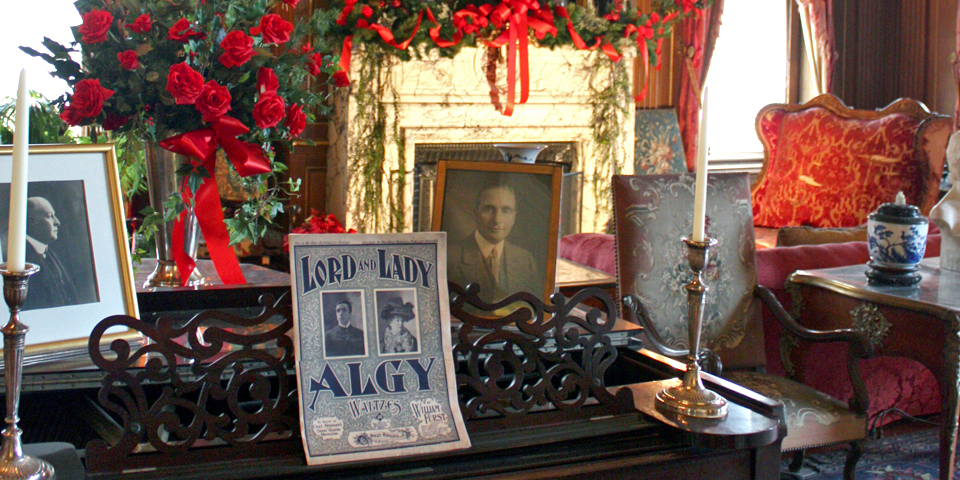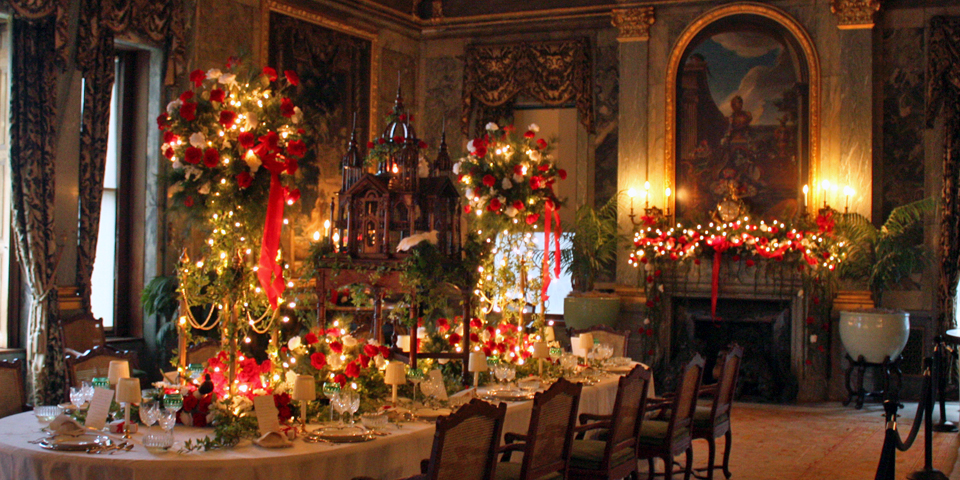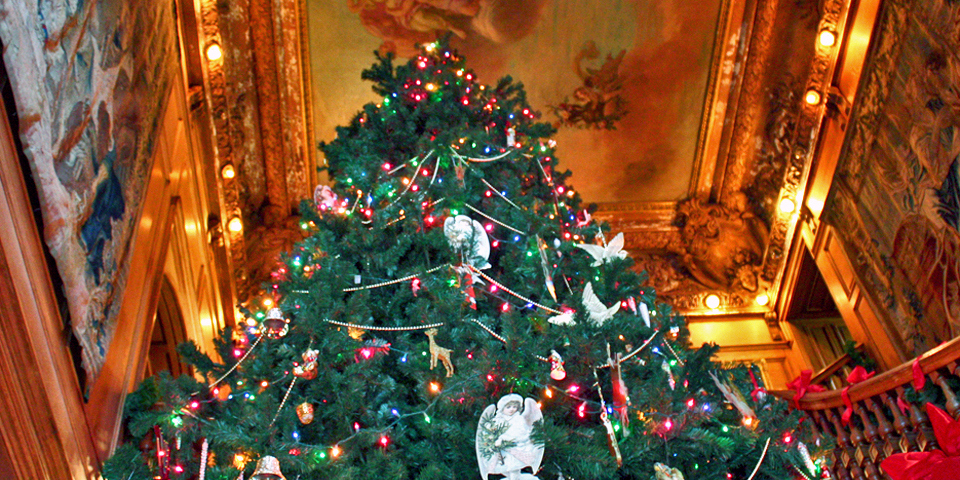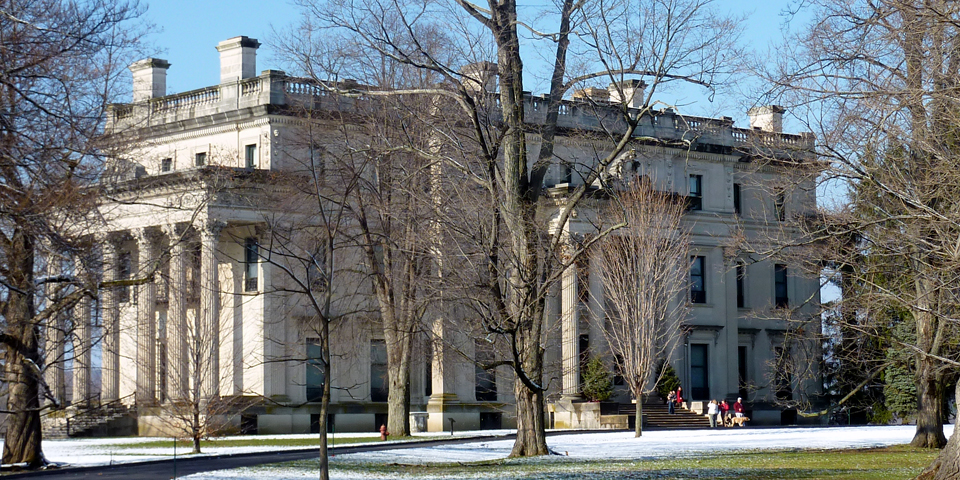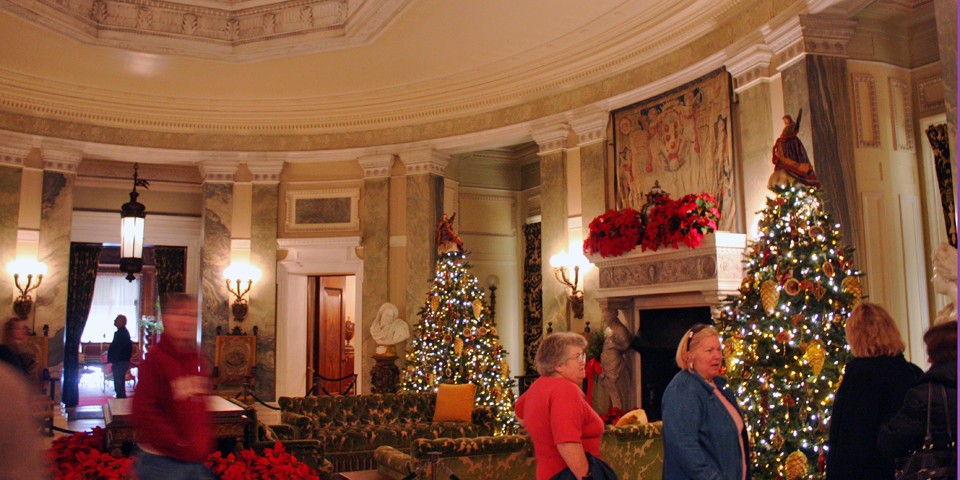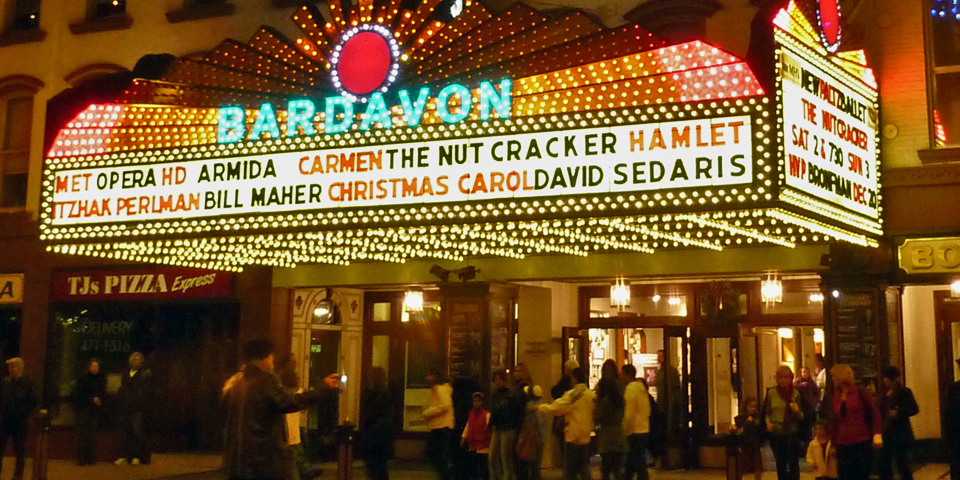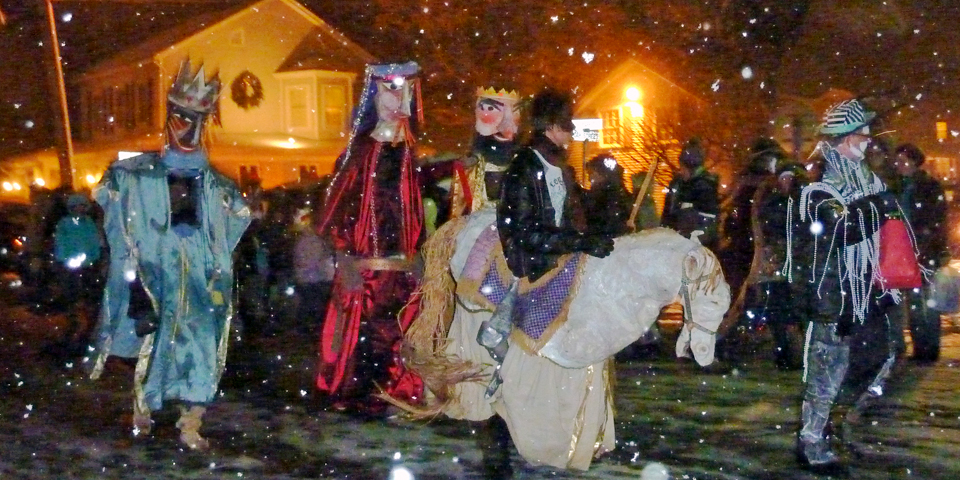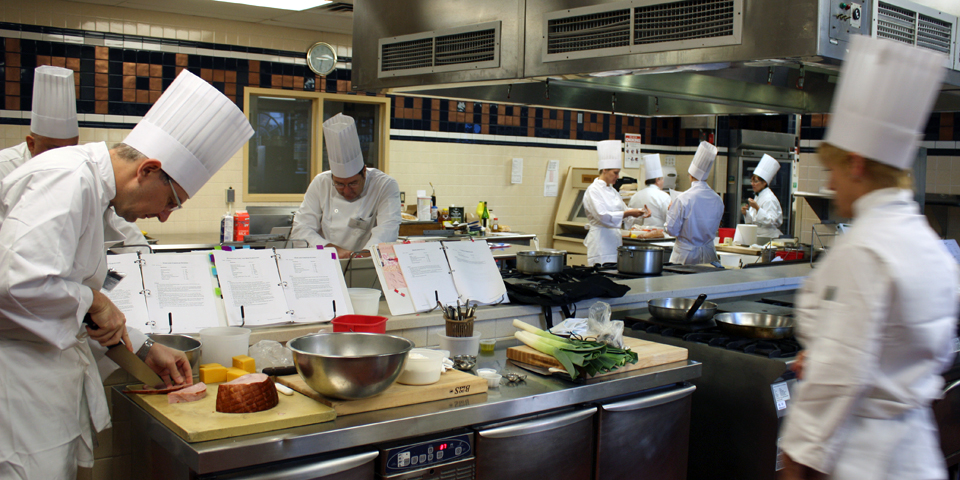Holiday on the Hudson: a Dutchess County Treat
We just spent four days visiting the historic and culinary attractions along Route 9 in Dutchess County. During the holiday season the area teems with open houses and special events.
What grander way to celebrate the season than amidst the splendor of some of America’s finest mansions? And what better time to step back to the Gilded Age and inside the homes of some of the most talked-about people of their time?
You can top off the trip with class. Enhance your holiday cooking skills and dine at one of the nation’s top culinary institutions.
Join the fun of festivals and parades in towns and villages aglow with the holiday spirit.
Catch a holiday performance in an historic theater that has featured Mark Twain, Buffalo Bill Cody, Frank Sinatra, and John Philip Sousa and Cher.
You can see the private side of the only President elected to four terms and the only American First Lady with her own National Historic Site. Discover the artistic talent of a great inventor and explore the grand mansions of prominent financiers and industrialists of the Gilded Age.
All along the Hudson River, the magnificent estates of Dutchess County are decked out in holiday style.
Franklin Delano Roosevelt’s New Deal: Happy Days are Here Again
Springwood, in Hyde Park, was the Georgian Colonial birthplace and lifelong home of Franklin Delano Roosevelt, and it has been left as it was when he died in 1945. Franklin, Eleanor and their Scottish terrier Fala are buried in his mother’s Rose Garden.
The adjacent Presidential Library and Museum, designed by FDR in Dutch Colonial style, houses a wide range of exhibits on Franklin and Eleanor’s personal and professional lives.
This is the only Presidential Library used by an incumbent President. Roosevelt had been stricken with polio in 1921, and the ramp was originally for his use.
FDR, as he was known, was the ultimate politician, seen as an aristocrat for the people who offered hope in the most difficult of times. Eleanor was his conscience in a political partnership that lasted 35 years, out of the Depression and into World War 2.
Both Franklin and Eleanor had private retreats in Hyde Park where they entertained friends and world leaders. FDR’s Top Cottage is open to visitors in the summer.
The knotty pine walls of Val-Kill, the only house that Eleanor considered her own, are lined with her treasures—photos and Christmas cards sent by friends and heads of state from around the world.
Nikita Khrushchev, Winston Churchill, and her 29 grandchildren from the 19 marriages of her 5 surviving children were among her guests.
The Confidente
FDR’s cousin and confidente, Margaret “Daisy” Suckley, lived in picturesque Rhinebeck. The Suckleys were descendent of the Beekman and Livingston families and had made their fortune in the export trade and real estate.
Their Italianate villa, Wilderstein, was rebuilt as an elaborate Queen Anne Victorian with an impressive porte-cochere, sprawling verandah, and spectacular views from its five story circular tower.
It is filled with exceptional furnishings, art, books, letters, and photographs, including about 1400 pieces of clothing dating to the 18th century.
The red velvet dress shown here was found in the home and displayed for the holidays. It is thought to have belonged to the Lucy, the daughter of Samuel Morse.
Daisy traveled extensively with FDR during his Presidency. She gave him his black Scottish terrier and wrote an account of the dog’s life, The True Story of Fala. She was an archivist for the Presidential Library and was with the President when he died in 1945. Letters they exchanged were discovered here in an old suitcase and edited for the book Closest Companion.
The restored first floor is open to visitors holiday weekends.
Samuel Morse: The American Leonardo
The Livingston family built Locust Grove and sold it to the Montgomery family, who later sold it to Samuel Morse, artist and inventor of the telegraph.
Morse remodeled it into a Tuscan villa with a four-story tower facing the river. He lived there with his much younger second wife, Sarah, a deaf mute and second cousin.
Morse was a talented itinerant painter whose first wife died suddenly. By the time he received the news and rushed home, she had been buried. He went on to make his fortune with the telegraph and Morse Code.
After his death in 1872, the family sold the property to William and Martha Young, who recognized its historic significance, collected period furnishings and art from around the world, and preserved the house as it had been in Morse’s lifetime. Christmas trees in each room of the home showcase passages from the classic “T’was the Night before Christmas”, written by the Hudson Valley’s Clement Clarke Moore. Morse’s art and inventions are on exhibit in the Visitor Center Gallery.
The mansions: Gilded Age Grandeur
Darius Mills amassed a fortune as a merchant in the California Gold Rush of 1849 and went on to be the most successful banker in Sacramento and a railroad magnate for the Comstock Lode. He was regarded as the most brilliant businessman of his time.
The family gained a pedigree when son Ogden married the aristocratic Ruth Livingston. When Ruth inherited a Greek Revival mansion with a mere 25-rooms, they remodeled it into an opulently furnished 79 room Beaux Arts mansion with every amenity.
It took 24 servants—European, of course — including a butler, 2 chauffeurs, maids, footmen, a valet, cooks, and a French pastry chef — to run Staatsburgh in proper style. Another 125 servants tended the grounds and dairy farm.
Since they had four other homes— on 5th Avenue in NYC, in California, in Paris, and “Ocean View” in Newport–they were here only from mid-September through December.
A 25’ Christmas tree dominates a reception hall lined with portraits indicating Mrs. Mills’ lineage and a spectacular stairway with elaborate gilding, European tapestries, and art.
Daughter Gladys married Henry Carnegie Phipps. Beatrice became the Countess of Granard when she married Bernard Forbes. Son Ogden Livingston Mills married and divorced Margaret Rutherfurd, stepdaughter of William Henry Vanderbilt, and became Secretary of the Treasury under Herbert Hoover. He was the same age as, but had little interaction with, neighbor Franklin Roosevelt, whose politics led him to be considered a traitor to his class.
Commodore Cornelius Vanderbilt: The Best that Money Could Buy
Commodore Cornelius Vanderbilt amassed a vast fortune in railroads and shipping and left an estate worth $105 million, more than was in the US Treasury at the time. Most was left to son William Henry, who doubled it (equivalent to $3 billion today) by the time he died eight years later, making him the richest man in the world. His children built the most extravagant homes known to America and entertained on a grand scale.
Frederick built one of his magnificent mansions in Hyde Park near his friends, the Mills. His was the ultimate Gilded Age country place with rooms reminiscent of Versailles, built at a staggering cost of over $600,000 in 1899.
The decorations and furnishings are mostly from French or Italian royal palaces, and cost over $2 ¼ million.
Frederick’s older brothers Cornelius II and William built even larger homes in Newport, R.I., The Breakers and Marble House, and younger brother George had the grandest home of all, Biltmore, in Asheville, NC.
Frederick had scandalized the family when he married Louise “Lulu” Torrance, a divorcee 12 years his senior who had previously been married to a first cousin. He was nearly disinherited and bequeathed a paltry $10 million. But it was Frederick who went on to amass more money than all his siblings combined. He left his estate to Louise’s niece, who arranged with then-President Roosevelt to sell the mansion and furnishings to the National Park Service for $100. The formal gardens and magnificent grounds of the Vanderbilt Mansion Historic Site have been restored to their 1930 appearance and are open daily to all.
Other attractions
Catch a holiday performance like The Nutcracker or A Christmas Carol, the classic tale of Victorian age social injustice and redemption at the Bardavon Theater, an 1869 Opera House with superb acoustics.
Bundle up for a 1.25 mile walk across the Poughkeepsie-Highland Railroad Bridge, which opened October 3 as Walkway Over the Hudson. Standing 212 feet above the river, this popular attraction is the world’s largest pedestrian bridge.
Admission is free to the wide ranging collection at the Frances Lehman Loeb Art Center at Vassar College. Don’t miss the Hudson River School of Art collection given by Matthew Vasser when the school was founded.
Rhinebeck becomes enchanted with the Old Dutch traditional holiday festival Sinterklaas in a downtown aglow and reminiscent of a holiday movie.
Sinterklaas is topped off by colorful street performances and a Children’s Starlight Parade of puppets, music, dancers, glowing handmade stars, and costumed children with hand decorated crowns and branches.
Savor some of their best or learn from the pros at the top-ranked Culinary Institute of America, housed in a former Jesuit Seminary in Hyde Park. Dine at one of five award-winning, student-staffed on campus public restaurants, enroll in a cooking class, take a public tours given by current students of the CIA, as it is known, or do some holiday shopping for cookbooks and culinary wares at the CIA store.
Learn to prepare holiday dinners with ease. The Culinary Institute of America’s classes are not just for aspiring professional chefs.
Take your passion for food to the next level in a professional kitchen with award-winning chef-instructors—but book early. Weekends, discover a new talent as you cook or bake from pages of CIA cookbooks. Weekdays you’ll learn the why as well as how at CIA Boot Camp.
No time for classes? Take a look at the Culinary Institute’s online recipes.
Dining favorites
You must dine at least once at the Culinary Institute of America, where students approaching graduation show what they have learned under the supervision of master chefs.
It’s a taste Tuscany at Ristorante Caterina de’ Medici, authentic French cuisine with extraordinaire at The Bocuse, or the finest regional specialties at American Bounty Restaurant. The Apple Pie Bakery Café is popular as a budget-friendly breakfast, lunch, early light dinner, or for festive treats for your holiday celebrations.
Reserve a table along the glass wall overlooking the Hudson River and holiday-illuminated Mid-Hudson Bridge at the stylish Shadows on the Hudson in Poughkeepsie. The food received rave reviews from fellow diners, and the popular Sunday-Thursday dinner special has to be the best deal in town.
Babycakes Café is owned by husband and wife team Jarek and Susan Wysocki, graduates of the Cullinary Institute of America. Across from the Vassar campus, it recently doubled in size and still fills quickly with people of all ages. Creative meals are made from scratch, attractively presented, and affordably priced. Live music Fridays and Saturdays creates a spirited atmosphere at a volume compatible with conversation. Be sure to try the Butternut and Maple Ravioli and Chocolate Bomb, voted Best Dessert in the Hudson Valley.
Languish in luxury, savor the seasonal splendor, and dine on delicacies. Dazzle your friends with newly-acquired culinary skills. It’s all there for you to enjoy in Dutchess County.
Reading list:
Too Close To The Sun by Curtis Roosevelt
The Culinary Institute of America Cookbook: A Collection of Our Favorite Recipes
The True Story of Fala by Margaret Suckley
Closest Companion Geoffrey C. Ward, editor
The American Leonardo: A Life of Samuel F. B. Morse by Carleton Mabee
© 2014 : All Rights Reserved. No part of this site may be reproduced, copied, or borrowed without contacting us for written permission. Contact information is available under the About Notable Travels tab at the top of the page.

